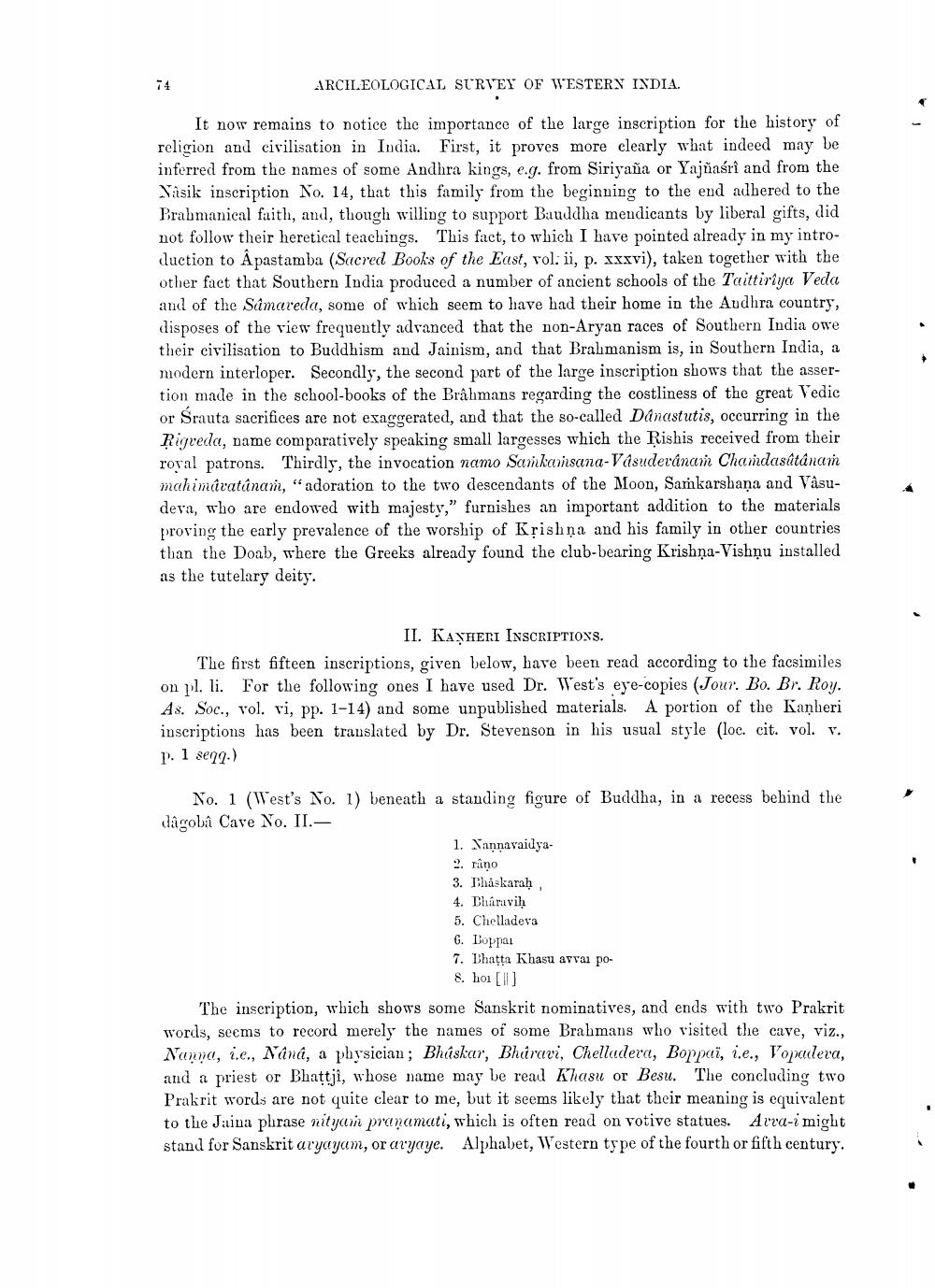________________
74
ARCHEOLOGICAL SURVEY OF WESTERN INDIA.
It now remains to notice the importance of the large inscription for the history of religion and civilisation in India. First, it proves more clearly what indeed may be inferred from the names of some Andhra kings, e.g. from Siriyaña or Yajňaśrî and from the Nasik inscription No. 14, that this family from the beginning to the end adhered to the Brahmanical faith, and, though willing to support Bauddha mendicants by liberal gifts, did not follow their heretical teachings. This fact, to which I have pointed already in my introduction to Apastamba (Sacred Books of the East, vol. ii, p. xxxvi), taken together with the other fact that Southern India produced a number of ancient schools of the Taittiriya Veda and of the Samareda, some of which seem to have had their home in the Audhra country, disposes of the view frequently advanced that the non-Aryan races of Southern India owe their civilisation to Buddhism and Jainism, and that Brahmanism is, in Southern India, a modern interloper. Secondly, the second part of the large inscription shows that the assertion made in the school-books of the Brahmans regarding the costliness of the great Vedic or Srauta sacrifices are not exaggerated, and that the so-called Ddnastutis, occurring in the Rigveda, name comparatively speaking small largesses which the Rishis received from their royal patrona. Thirdly, the invocation namo Samkamsana-Vasudevinash Chasidasútánam mahimavatânam, "adoration to the two descendants of the Moon, Samkarshana and Vâsudeva, who are endowed with majesty," furnishes an important addition to the materials proving the early prevalence of the worship of Krishna and his family in other countries than the Doab, where the Greeks already found the club-bearing Krishna-Vishnu installed as the tutelary deity.
II. KANNERI INSCRIPTIONS.
The first fifteen inscriptions, given below, have been read according to the facsimiles on pl. li. For the following ones I have used Dr. West's eye-copies (Jour. Bo. Br. Roy. As. Soc., vol. vi, pp. 1-14) and some unpublished materials. A portion of the Kanheri inscriptions has been translated by Dr. Stevenson in his usual style (loc. cit. vol. v. p. 1 seqq.)
No. 1 (West's No. 1) beneath a standing figure of Buddha, in a recess behind the dâgobâ Cave No. II.
1. Nannavaidya
2. râno
3. Bhaskaraḥ,
4. Bharaviḥ
5. Chelladeva
6. Boppai
7. Bhatta Khasu avval po8. ho1 [||]
The inscription, which shows some Sanskrit nominatives, and ends with two Prakrit words, seems to record merely the names of some Brahmans who visited the cave, viz., Nanna, i.e., Naná, a physician; Bhaskar, Bharavi, Chelladera, Boppai, i.e., Vopadeva, and a priest or Bhattji, whose name may be read Khasu or Bess. The concluding two Prakrit words are not quite clear to me, but it seems likely that their meaning is equivalent to the Juina phrase witym progamati, which is often read on votive statues. Arva-i might stand for Sanskrit aryayam, or aryaye. Alphabet, Western type of the fourth or fifth century.




